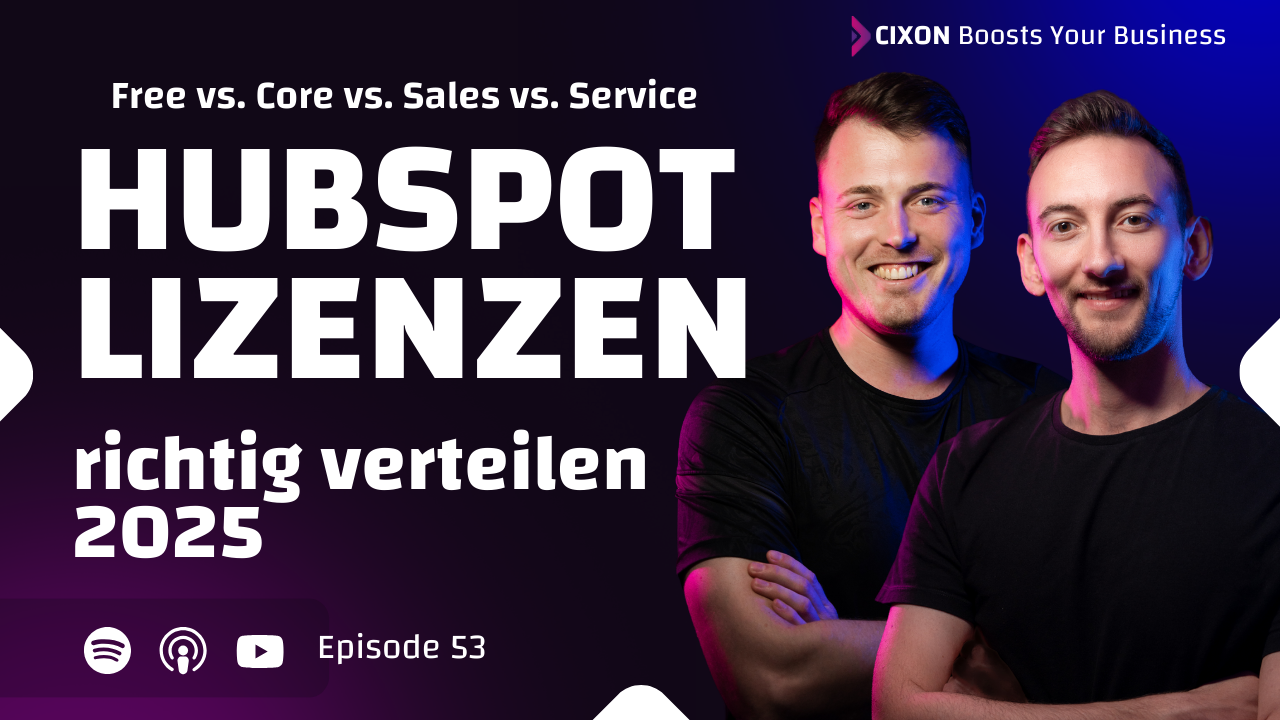In today's business world, recurring revenues are the backbone of success for many companies. Especially in the SaaS sector, for agencies with retainer contracts or IT service providers with maintenance agreements, precise management of subscriptions is crucial. But managing this recurring revenue in CRM has often been a challenge, relying on cumbersome solutions.
Good news for all HubSpot users and those who want to become one: The native subscription object (or Subscription Object) in HubSpot is here - and it's a real game changer!
Goodbye, custom objects - hello, native power! The evolution of HubSpot Subscription Management
For a long time, it was common practice in HubSpot to manage recurring revenue via custom objects or manual entries in the accounting. These solutions were often complicated, offered limited transparency and required external tools or complex integrations to map effective subscription management. Information was lost and upselling or cross-selling opportunities remained untapped.
HubSpot introduced the subscription object as early as mid-2022, but it was initially only available in the US and in conjunction with HubSpot Payments and was poorly integrated. In the course of the commerce functions, which were further developed in the course of 2023, the subscription function also received an upgrade and was relaunched at the beginning of 2024 (first in the USA, now also in the DACH region).
You can listen to other important updates and new features of HubSpot in 2025 in our podcast.
What makes the native subscription object a game changer?
The new Subscription object has a number of advantages that set it apart from previous solutions:
- Native object & Easy activation:
It is a tightly integrated part of HubSpot. To activate it, all you need is a free Stripe account and activate the interface in the commerce section of your HubSpot portal. This activates the object without the need to process payments via Stripe. This is usually already included in the normal, simple licenses, and many HubSpot customers don't even know this.
- Comprehensive transparency & data sovereignty:
You receive all data on your subscriptions directly and natively in HubSpot. This provides good transparency for customer success managers, sales and revenue operations managers to see at a glance information such as license renewals, upgrades or downgrades.
- Improved reporting & analytics:
The subscription object provides access to specialized reports and analytics based on this native data. Standard reports for MRR (Monthly Recurring Revenue) and ARR (Annual Recurring Revenue) are available, as well as analytics on new subscriptions or churn rates. The Custom Report Builder can be used to create customized reports based on all standard and custom properties of the subscription object. With custom objects it was often difficult to create reports, sometimes you even had to feed data into third party systems.
- Flexibility through custom properties:
Unlike previous Custom Objects, you can now store additional custom properties to track specific information, such as whether it's a Starter, Professional or Enterprise subscription.
- Seamless linking & automation:
Subscriptions can be linked to contacts, companies, deals and products. This enables a detailed breakdown, e.g. which software was sold by which manufacturer to which end customer. Deals can be converted directly into subscriptions, whereby one-off professional services can be easily removed. All properties of the subscription object can be used as triggers in workflows to send automated email routes, reminders (e.g. 30 days before the renewal date) or notifications to Customer Success Managers.
- Visual processing:
The CRM card for the subscription object offers a very nice visual presentation. You can see the status, renewal date and the responsible employee at a glance - a detail that was often missing with custom objects.
Typical use cases for the subscription object
The subscription object is ideal for companies with recurring revenue, including
- SaaS companies: To manage software licenses, upgrades and downgrades. In the past, SaaS companies often used external tools for this, where information for sales and marketing was lost and upsell/cross-sell opportunities were missed.
- Agencies: For monthly support contracts (retainers).
- Coaching & online learning platforms: For mapping course or membership subscriptions.
- IT service providers & manufacturing industry: For maintenance and service contracts.
By centrally managing all subscription information in HubSpot, you will never miss an opportunity for upsells, cross-sells or proactive customer support.
Conclusion: Why the native HubSpot subscription object is worthwhile for you
The native subscription object in HubSpot is more than just a new feature; it is a real advancement that fundamentally simplifies and optimizes the management of recurring revenue. It solves long-standing challenges and enables companies to manage their customer relationships and revenue streams more effectively.
Take advantage of this revolution within HubSpot to move away from cumbersome custom objects and realize the full potential of your recurring revenue.
Do you have any questions about the Subscription object in HubSpot or would you like to check it for your specific use case? Don't hesitate to contact us! We would be happy to take a look at your processes and show you how the subscription object can help your business.
If you want to stay up to date with the latest trends in CRM, subscribe to our free newsletter here.
.png?width=1200&name=Blog%20Thumbnails%20-%20Podcast%20Juli%202024%20(3).png)





.png)